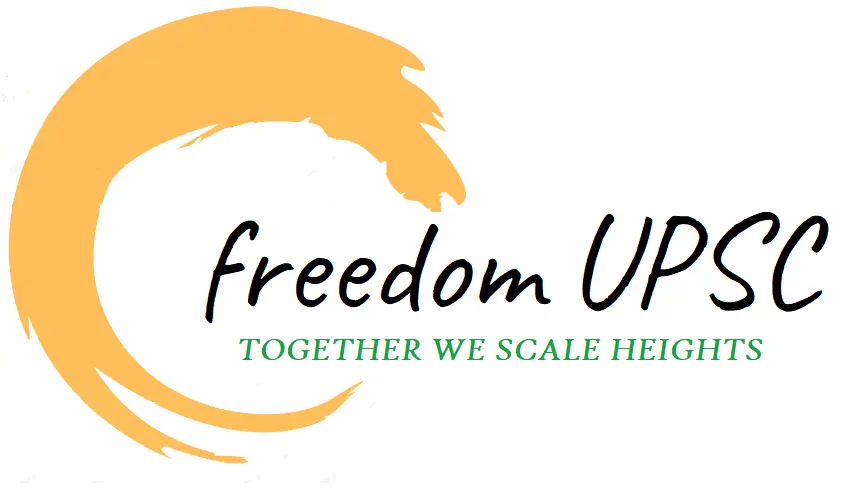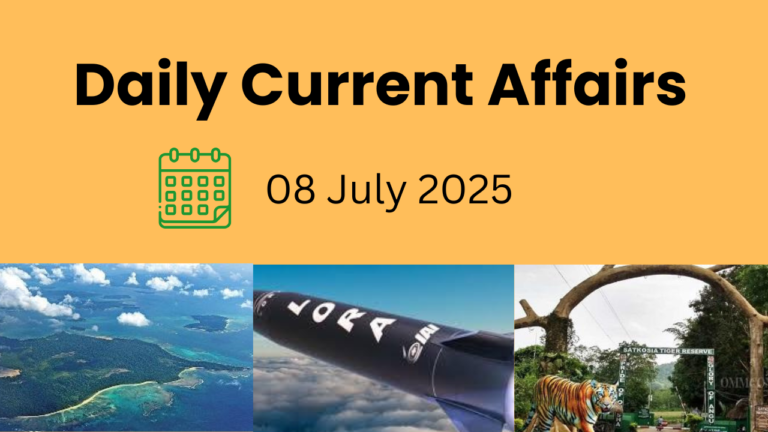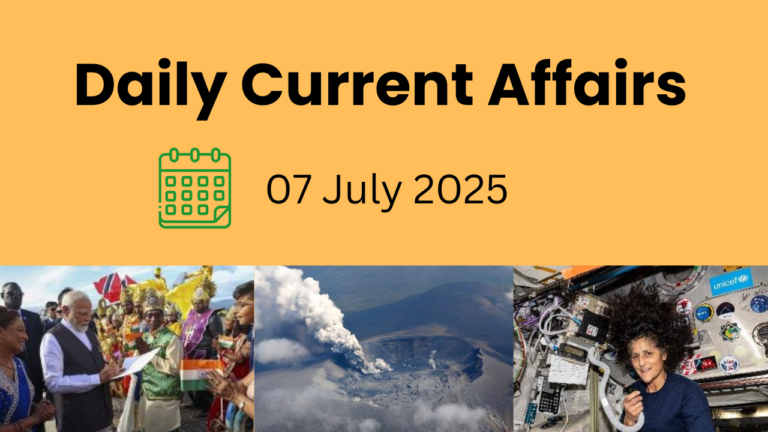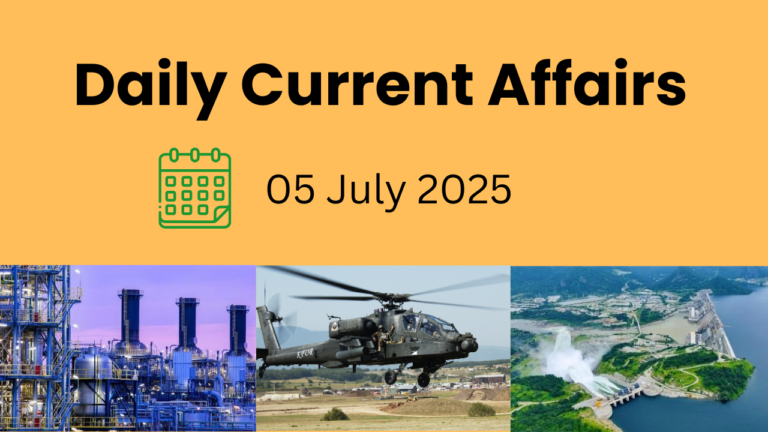1. Supreme Court Judges Publicly Declare Assets – A Milestone in Judicial Transparency
Context: In a landmark move toward judicial accountability, 21 sitting judges of the Supreme Court of India, including the Chief Justice of India (CJI), have voluntarily disclosed their financial assets and liabilities on the apex court’s official website.
Background: Evolving Discourse on Judicial Ethics
- Judicial accountability has long been debated in India, especially regarding financial transparency and ethical standards.
- Judges, unlike legislators or civil servants, are not legally required to publicly declare their assets.
- The current disclosures stem from a Full Court Resolution, signaling a commitment to public confidence and openness.
Timeline of Key Developments:
| Year | Event |
| 1997 | First Full Court Resolution under CJI J.S. Verma recommends judges disclose assets to the Chief Justice. |
| 2009 | A new Full Court resolution allows voluntary disclosure of assets on the Supreme Court website. |
| 2009 | The Delhi High Court rules that such declarations are “information” under Section 2(f) of the RTI Act, 2005. |
| 2019 | A Constitution Bench declares the CJI a ‘public authority’ under the RTI Act, supporting the public interest in asset disclosure. |
| 2025 | The Supreme Court begins proactively publishing judges’ assets, including familial ties, on its website. |
Significance of Asset Declaration:
- Promotes Transparency: Demonstrates a commitment to ethical conduct and clean governance.
- Builds Public Trust: Counters perceptions of elitism, opacity, or bias in the judiciary.
- Upholds Constitutional Morality: Reflects the values of integrity, accountability, and responsibility in line with the Preamble and Directive Principles (Part IV) of the Indian Constitution.
Why Judicial Integrity Matters:
Guardian of the Constitution:
- The judiciary safeguards fundamental rights, ensures rule of law, and maintains institutional checks and balances.
Ensuring Accountability:
- Lack of transparency may lead to judicial corruption, delays, or misuse of authority.
- Asset declarations help deter conflicts of interest and enhance public scrutiny.
Institutional Stability:
- In times of political crisis or social unrest, a trustworthy judiciary acts as a pillar of democracy and reinforces national unity.
Concluding Thoughts:
Transparency and ethical conduct are not optional in a democracy—they are the lifeblood of judicial legitimacy. The Supreme Court’s move to disclose judges’ assets is a progressive step toward a more accountable, inclusive, and respected judiciary.
A strong and transparent judiciary isn’t just a constitutional ideal—it is a moral imperative for democratic governance and societal harmony.
2. Human Development Report 2025 – UNDP Insights
Context: The United Nations Development Programme (UNDP) has released the Human Development Report (HDR) 2025, titled:
“A Matter of Choice: People and Possibilities in the Age of AI”
The report emphasizes how Artificial Intelligence (AI) is reshaping the future of human development, while highlighting India’s progress in health, education, and income.
Human Development Index (HDI): Concept and Dimensions
Conceived by Pakistani economist Mahbub ul Haq in 1990, HDI is a composite index used to measure a country’s socio-economic development through:
1. Health:
- Measured by Life Expectancy at Birth
- Related to SDG-3: Good Health and Well-being
2. Education:
- Assessed by Mean Years of Schooling (SDG-4.4)
- And Expected Years of Schooling (SDG-4.3)
3. Standard of Living:
- Measured via Gross National Income (GNI) per capita
- Adjusted for inequality (SDG-8.5)
HDI Categories:
| Development Level | HDI Value |
| Low Human Development | Below 0.550 |
| Medium Human Development | 0.550 – 0.699 |
| High Human Development | 0.700 – 0.799 |
| Very High Development | 0.800 and above |
Limitations & Complementary Indices:
HDI doesn’t account for inequality, poverty, security, or empowerment. To bridge these gaps, UNDP also uses:
- Inequality-adjusted HDI (IHDI)
- Gender Inequality Index (GII)
- Multidimensional Poverty Index (MPI)
Global HDI Rankings (2023 Snapshot):
- Top Ranked: Iceland (0.972), followed by Norway and Switzerland
- Lowest: South Sudan (Rank 193, HDI: 0.388)
India’s HDI Performance:
- HDI Rank: 130th (up from 133rd in 2022)
- HDI Value: 0.685 (from 0.676)
- India remains in the Medium Human Development category.
- 53% HDI growth since 1990, outpacing global and South Asian averages.
Comparison with Neighbours:
| Country | Rank |
| China | 75th |
| Sri Lanka | 78th |
| Bhutan | 127th |
| India | 130th |
| Bangladesh | 130th |
| Nepal | 145th |
| Myanmar | 149th |
| Pakistan | 168th |
India’s Human Development Achievements:
Health:
- Life Expectancy rose from 58.6 years (1990) to 72 years (2023)
- Key Programs: Ayushman Bharat, Janani Suraksha Yojana, Poshan Abhiyaan
Education:
- Mean years of schooling increased from 8.2 to 13 years
- Boosted by: Right to Education Act, Samagra Shiksha Abhiyan, NEP 2020
Income:
- GNI per capita surged from $2,167 (1990) to $9,046 (2023)
- 135 million people escaped multidimensional poverty (2015–2021)
Key Challenges Highlighted in HDR 2025:
AI and Human Development:
- AI should augment human potential, not replace it.
- Calls for bold policy measures to ensure AI benefits everyone.
Widening Global Inequalities:
- Rising inequality is slowing global progress.
- India’s HDI loss due to income inequality: 30.7% (among the highest in Asia)
- Persistent gender disparities in education, healthcare, and employment.
Key Policy Recommendations:
Three Action Areas:
- Complementarity Economy – Foster collaboration between humans and AI
- Innovation for Capability Expansion – Use AI to enhance human creativity and productivity
- Invest in Social Systems – Prioritize inclusive education, universal healthcare, and social protection
Conclusion: The HDR 2025 emphasizes that human development is a matter of choice—and in the AI era, we must choose to build a fair, inclusive, and sustainable future. India’s progress is commendable, but the road ahead demands deeper reforms, ethical AI use, and inclusive policies to truly empower all citizens.
3. India Tightens Security Rules for Satellite Communication Service Providers
Context: India’s Department of Telecommunications (DoT) has rolled out stricter security and operational guidelines for satellite communication (satcom) firms to enhance data security, national sovereignty, and the integration of indigenous technologies.
India Satellite Communication Guidelines: Latest Updates
The new norms impact companies such as Starlink (Elon Musk), Amazon’s Project Kuiper, Eutelsat OneWeb, and Jio Satellite. The guidelines focus on:
- Data localisation
- NavIC integration
- Metadata collection
- Blocking non-compliant websites
- Local infrastructure mandates
Key Compliance Requirements for Satcom Companies:
1. Local Manufacturing Mandate:
- Companies must submit a phased manufacturing plan.
- 20% indigenisation of the ground segment is required within five years of commercial launch.
2. Integration of NavIC:
- Mandatory on a best-effort basis initially.
- Full transition to NavIC required by 2029.
- Supports India’s autonomous navigation capability.
3. Data Localisation Norms:
- All user data must be stored within India.
- No traffic should route through foreign gateways, PoPs, or space systems not authorized by India.
- Data mirroring or decryption outside India is strictly prohibited.
4. Website Blocking & Traffic Control:
- Firms must implement systems to block access to government-identified websites.
- Operators must comply with instructions to restrict services to individuals or regions during emergencies or conflict.
5. Law Enforcement Compliance:
- Satcom firms must:
- Share metadata upon request.
- Report any foreign/unregistered terminals operating in India.
- Offer real-time location tracking (latitude–longitude) of all user terminals.
6. India-Based Infrastructure Mandate:
- All key infrastructure must be India-hosted, including:
- Data centers
- DNS resolution
- Lawful interception systems
- Network control & monitoring tools
Special Security Provisions:
Special Monitoring Zones (SMZs):
- Includes areas:
- Within 50 km of international borders
- Coastal areas up to the Exclusive Economic Zone (200 nautical miles)
- Subject to heightened surveillance by security agencies.
Clearance for Communication Services:
- Launch of voice or data communication services requires separate national security clearances.
Strategic Intent Behind the Guidelines:
These guidelines reflect India’s commitment to:
- Digital Sovereignty
- Strengthening National Security
- Promoting Indigenous Technologies (e.g., NavIC)
- Boosting Local Manufacturing in telecom and satellite infrastructure
Current Regulatory Landscape:
- Starlink is awaiting final security clearance to begin operations in India.
- Partnerships already formed with Airtel and Jio.
- The Telecom Regulatory Authority of India (TRAI) is finalizing a satellite spectrum allocation framework, which will further shape the satcom landscape.
4. The Maldives: A Fragile Paradise in the Indian Ocean
Context: The Maldives is a sovereign archipelagic nation located in the Indian Ocean, consisting of 26 natural atolls and over 1,000 coral islands. The country lies to the south-southwest of India, and its northernmost atoll is strategically positioned close to the Indian subcontinent.
One of the notable maritime boundaries of the Maldives is the Eight Degree Channel, a crucial sea lane that separates the island of Minicoy (part of India’s Lakshadweep Islands) from the northern Maldives. This channel is vital for commercial and strategic navigation.
Unique Geographical Features of the Maldives:
- Coral Origins: The entire nation is formed by coral reefs. It is among the few countries with no rivers or mountains, giving it a flat and fragile topography.
- Reef Ecosystem: The Maldives boasts the seventh-largest coral reef system in the world, contributing about 3.14% of the global coral reef coverage. These reefs support a vibrant ecosystem and are a major tourist attraction.
- Rising Sea Concerns: With an average elevation of only 1.7 meters above mean sea level, the Maldives is one of the most vulnerable nations to sea-level rise caused by climate change. A one-meter rise in sea level could submerge most of the inhabited islands.
Why HADR Exercises Matter:
The joint HADR drill is not just a military engagement, but a humanitarian partnership aimed at improving interoperability in crisis situations like cyclones, tsunamis, or coastal flooding. These efforts equip both nations with shared strategies for search and rescue operations, medical aid, and logistics support during disasters.
Did You Know?
- The Maldives is the lowest-lying country in the world.
- The nation’s exclusive economic zone (EEZ) spans over 900,000 sq. km, despite its small land area—making its marine resources highly valuable.
It was the first country to hold an underwater cabinet meeting (in 2009) to highlight the threat of climate change.
5. Kaleshwaram Project Under Scrutiny: Structural Damage Raises Safety Concerns
Context: In a recent development, the National Dam Safety Authority (NDSA)—India’s apex body for dam safety—has reported “irreparable structural damage” in three key barrages of the Kaleshwaram Lift Irrigation Project (KLIP). These findings have raised serious concerns over the long-term safety and sustainability of one of the world’s largest lift irrigation systems.
Kaleshwaram Lift Irrigation Project: Engineering Marvel of Telangana:
The Kaleshwaram Lift Irrigation Project (KLIP) is a multi-purpose mega infrastructure project located on the Godavari River in Kaleshwaram, Jayashankar Bhupalpally district, Telangana. This project is designed to provide irrigation water, drinking water, and industrial supply to vast areas across the state.
- Coverage: It aims to serve 45 lakh acres across 20 out of Telangana’s 33 districts, including the twin cities of Hyderabad and Secunderabad.
- Scale: KLIP is currently the world’s largest multi-stage lift irrigation project, with a network that includes seven links, 28 construction packages, and an extensive canal system spanning more than 1,800 km.
Hydrological and Geographical Significance:
The project taps water from the confluence of the Pranhita and Godavari rivers, situated in northern Telangana. The Pranhita River is formed by the joining of the Wardha, Wainganga, and Painganga rivers, making it part of the seventh-largest river basin in the Indian subcontinent.
- Total Water Lifted: The project targets the lifting and distribution of approximately 240 TMC (Thousand Million Cubic Feet) of water.
- Utilization: Water is allocated for agriculture, municipal water supply, industrial use, and rural drinking water.
Current Challenge: Damaged Barrages Raise Alarms
The NDSA’s report has highlighted structural failures in three crucial barrages, potentially threatening the project’s long-term viability and public safety. The damages are reportedly beyond repair, prompting calls for urgent inspection, retrofits, or reconstruction of key components.
Safety experts and civil engineers have voiced concerns about the quality of construction, design standards, and monitoring mechanisms, calling for a thorough technical audit.
Did You Know?
- KLIP uses massive pumps to lift water to heights of over 600 meters, a feat that requires enormous energy and sophisticated engineering.
- The project’s cost has been estimated at over ₹80,000 crore, making it one of the most expensive irrigation ventures in India.
- If fully operational and structurally sound, KLIP has the potential to transform Telangana’s agrarian economy and ensure water security for decades.
Conclusion: A Moment of Reflection and Action
While the Kaleshwaram Project remains a symbol of engineering ambition, the recent findings serve as a stark reminder of the importance of structural integrity, transparent governance, and sustainable planning. Timely intervention and accountability will be crucial to protect both public investment and regional livelihoods dependent on this grand initiative.
6. Ancient Flames in Stone: Scientists Discover Palaeofire Evidence in the Godavari Basin
Context: In a remarkable discovery, scientists have found evidence of palaeofires—ancient wildfires dating back to the Permian Period (~250 million years ago)—in the Godavari Basin, shedding light on the role of wildfires in shaping Earth’s climate, ecosystems, and coal formation over millions of years.
What Are Palaeofires?
Palaeofires are wildfires from prehistoric times, preserved in the geological record. These fossilized fire events provide crucial insights into:
- Past vegetation dynamics
- Atmospheric oxygen levels
- Climate evolution
- Coal and carbon cycle formation
The study, which spans from the Late Silurian Period (443.8–419.2 million years ago) to the Quaternary Period (2.58 million years ago to present), shows how wildfires have continuously shaped Earth’s landscapes and carbon storage processes.
Cutting-Edge Techniques Reveal Ancient Fire Signatures:
Researchers employed advanced scientific methods to analyze ancient sedimentary rocks for signs of wildfire activity:
- Palynofacies Analysis – Studied microscopic organic debris in sediments.
- Raman Spectroscopy – Examined the chemical composition of charcoal.
- FTIR Spectroscopy – Identified organic molecular structures.
- Rock-Eval Pyrolysis – Measured hydrocarbon generation potential of the samples.
These methods enabled scientists to identify three key types of organic matter:
- Translucent Organic Matter (TrOM): Includes pollen grains and plant fragments.
- Palaeofire Charcoal (PAL-CH): Solid evidence of past wildfires.
- Oxidised Charcoal (OX-CH): Likely transported charcoal altered after the fire.
Key Discoveries and Geological Implications:
- The team successfully differentiated between in situ (on-site) and ex situ (transported) charcoal—resolving a major geological puzzle about the origin of charcoal in coal seams.
- Stratigraphic layers revealed clear patterns:
- Regressive phases (falling sea levels): Well-preserved, concentrated charcoal deposits.
- Transgressive phases (rising sea levels): More dispersed and oxidised charcoal, showing greater environmental reworking.
- The Permian Period’s high oxygen levels made the planet highly fire-prone, increasing both the intensity and frequency of wildfires. These fires likely influenced peat formation, a precursor to coal.
India’s Contribution: The Raniganj Coalfield Case:
- The Raniganj Coalfield in eastern India was among the first regions to show macroscopic charcoal in coal seams, confirming the existence of palaeofires in ancient peat-forming environments (known as palaeomires).
Why It Matters Today:
Understanding palaeofires helps us better comprehend the global carbon cycle, including how carbon was stored in ancient environments and how wildfires contributed to long-term carbon sequestration. This has direct relevance to:
- Climate change studies
- Carbon cycling models
- Modern wildfire risk assessments
Did You Know?
- Earth’s highest atmospheric oxygen levels (~35%) occurred during the late Paleozoic era, making the Permian Period one of the most fire-active epochs in Earth’s history.
- Fossil charcoal, though small, is incredibly resilient, and can preserve fire evidence for hundreds of millions of years.
This research not only connects India’s ancient geological past with global Earth history, but also offers valuable lessons for managing carbon and understanding the potential long-term impacts of wildfire activity in our rapidly changing climate.




